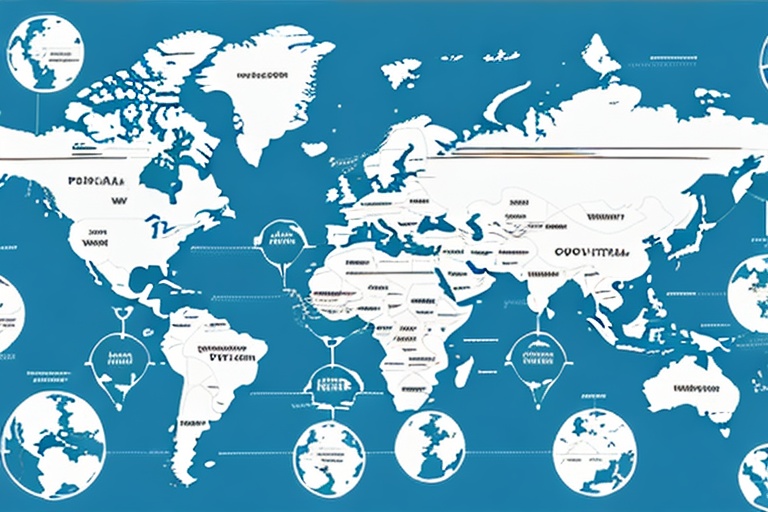Introduction to the UPS Worldship API
The UPS Worldship API is a robust application programming interface designed to integrate shipping and tracking functionalities directly into a business's existing systems. By leveraging this API, businesses can seamlessly manage shipments of all sizes, enhancing operational efficiency and reliability. Integrating the UPS Worldship API is an excellent strategy for businesses seeking to optimize their shipping processes and improve overall performance.
Key Features of the UPS Worldship API
Real-Time Shipping and Tracking
The UPS Worldship API provides real-time tracking capabilities, allowing businesses to monitor the status of shipments at every stage. This feature ensures transparency and enables proactive management of delivery timelines.
Automated Label Generation
With the API, businesses can automatically generate shipping labels and tracking numbers, reducing manual effort and minimizing the risk of errors. This automation streamlines the shipping process, saving valuable time.
Integration with Business Systems
The UPS Worldship API can be integrated with various business systems such as inventory management and customer relationship management (CRM) platforms. This seamless integration ensures that shipping data is synchronized across all relevant applications.
Access to UPS Rates and Transit Times
Businesses can access up-to-date UPS rates and transit times through the API, allowing them to provide accurate shipping estimates to customers and optimize shipping strategies based on cost and delivery speed.
Benefits of Integrating the UPS Worldship API
Increased Efficiency and Accuracy
Integrating the UPS Worldship API automates many shipping processes, such as label printing and tracking updates, which reduces the likelihood of errors and accelerates order fulfillment. According to a Forbes report, companies that implement automated shipping solutions can improve order accuracy by up to 30%.
Cost Savings
The API provides access to discounted shipping rates, which can lead to significant cost savings, especially for businesses with high shipping volumes. Additionally, by reducing manual tasks, businesses can allocate resources more effectively.
Enhanced Customer Experience
Real-time tracking and timely notifications enhance the customer experience by keeping customers informed about their shipments. Improved transparency leads to higher customer satisfaction and loyalty.
Scalability
The UPS Worldship API is scalable, allowing businesses to easily adjust their shipping operations as they grow. Whether handling a surge in orders during peak seasons or expanding to new markets, the API supports seamless scaling.
Implementing the UPS Worldship API in Your Business
Steps for Integration
- Assess Compatibility: Ensure that your current systems are compatible with the UPS Worldship API.
- Develop Integration Code: Create or modify existing code to interact with the API.
- Connect to E-commerce Platforms: Integrate the API with your online store or sales platforms.
- Testing: Conduct thorough testing to identify and resolve any issues before going live.
- Deployment: Implement the API integration and monitor its performance.
Best Practices
- Collaborate with experienced developers or consult with UPS support to ensure a smooth integration.
- Regularly update and maintain the integration to align with any updates to the UPS Worldship API.
- Provide adequate training to your staff to maximize the benefits of the API.
Cost Savings and ROI of the UPS Worldship API
Integrating the UPS Worldship API can result in substantial cost savings by automating shipping processes and reducing errors. Businesses can expect a significant return on investment (ROI) through lower operational costs and increased efficiency. According to a McKinsey & Company study, companies that optimize their shipping operations can achieve up to a 20% reduction in shipping costs.
Overcoming Challenges with the UPS Worldship API
Technical Integration Issues
Integrating an API can present technical challenges. To mitigate these, businesses should ensure compatibility between systems and consider working with experienced developers. Regular testing and updates are crucial to maintain seamless operations.
Training and Adaptation
Adopting new technologies requires adequate training for staff. Providing comprehensive training programs can help employees adapt to the new system and utilize its features effectively.
Maintaining Data Security
Ensuring the security of shipping and customer data is paramount. Implement robust security measures and comply with relevant data protection regulations to safeguard sensitive information.
Future of the UPS Worldship API
The UPS Worldship API continues to evolve, with ongoing enhancements aimed at improving efficiency and expanding functionality. Future developments may include greater integration with emerging technologies such as Artificial Intelligence (AI) and Machine Learning to further optimize shipping processes and predictive analytics for better decision-making.
Conclusion
The UPS Worldship API is a powerful tool for businesses looking to streamline their shipping operations. By providing real-time tracking, automated shipping, and seamless integration with existing systems, the API enhances efficiency, reduces costs, and improves the overall customer experience. Implementing the UPS Worldship API can lead to significant operational benefits and a strong return on investment, making it an essential component for businesses aiming to optimize their shipping processes in today’s competitive market.




















